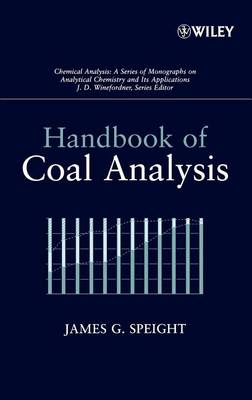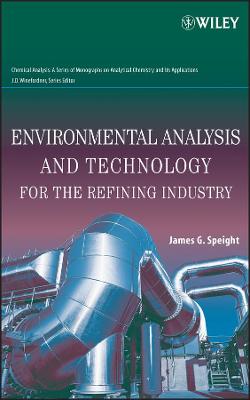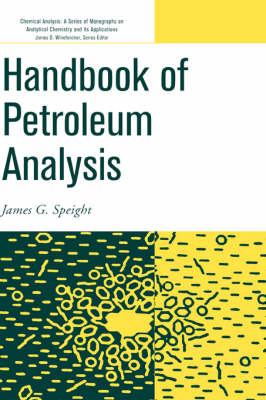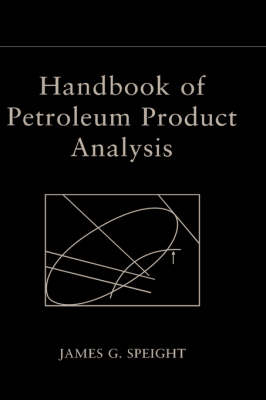Chemical Analysis: A Series of Monographs on Analytical Chemistry and Its Applications
2 primary works • 4 total works
Book 166
The thorough coverage of coal analysis includes: detailed presentation of necessary standard tests and procedures; explanation of coal behavior relative to its usage alongside the corresponding environmental issues; coverage of nomenclature, terminology, sampling, and accuracy and precision of analysis; step-by-step test method protocols for proximate analysis, ultimate analysis, mineral matter, physical and electrical properties, thermal properties, mechanical properties, spectroscopic properties, and solvent properties; and places emphasis on relevant American Society for Testing and Materials (ASTM) standards and test methods, including corresponding International Organization for Standardization (ISO) and British Standards Institution (BSI) test method numbers. To assist readers in understanding the material, a glossary of terms is provided. Each term is defined in straightforward language that enables readers to better grasp complex concepts and theory. References at the end of each chapter lead readers to more in-depth discussions of specialized topics.
This is an essential reference for analytical chemists, process chemists, and engineers in the coal industry as well as other professionals and researchers who are looking to coal as a means to decrease dependence on foreign oil sources and devise more efficient, cleaner methods of energy production.
Book 167
Environmental Analysis and Technology for the Refining Industry
by James G. Speight
Environmental analysis and testing methods are an integral part of any current and future refining activities. Today's petroleum refining industry must be prepared to meet a growing number of challenges, both environmental and regulatory.
Environmental Analysis and Technology for the Refining Industry focuses on the analytical issues inherent in any environmental monitoring or cleanup program as they apply to today's petroleum industry, not only during the refining process, but also during recovery operations, transport, storage, and utilization. Designed to help today's industry professionals identify test methods for monitoring and cleanup of petroleum-based pollutants, the book provides examples of the application of environmental regulations to petroleum refining and petroleum products, as well as current and proposed methods for the mitigation of environmental effects and waste management.
Part I introduces petroleum technology, refining, and products, and reviews the nomenclature used by refiners, environmental scientists, and engineers. Part II discusses environmental technology and analysis, and provides information on environmental regulation and the impact of refining.
Coverage includes:
* In-depth descriptions of analyses related to gaseous emissions, liquid effluents, and solid waste
* A checklist of relevant environmental regulations
* Numerous real-world examples of the application of environmental regulations to petroleum refining and petroleum products
* An analysis of current and proposed methods of environmental protection and waste management
The need for the application of analytical techniques to petroleum has increased over the past three decades due to changes in feedstock composition. Handbook of Petroleum Analysis deals with the various aspects of petroleum analysis while providing a detailed explanation of the necessary standard tests and procedures that are applicable to feedstocks. The material also reviews the application of new methods for determining instability and incompatibility, focusing on the analytical methods related to environmental regulations. Most importantly, the book provides details of the meanings of the various test results and how they might be applied to predict feedstock behavior. Where pertinent, new tests that are not yet accepted as standardized are described.
Topics covered in Handbook of Petroleum Analysis include:
- Chemical composition
- Physical, thermal, electrical, and optical property testing methods
- Spectroscopic, chemical, fractionation, and chromatographic methods
- Molecular weight
- Use of the data (i.e., mapping and predictability)
Handbook of Petroleum Analysis promotes a better understanding of the criteria affecting the quality of petroleum and petroleum products and is a valuable resource for chemists and engineers in the refining industry.
Chapters include: -Naphtha -Aviation Fuel -Kerosene -Distillate Fuel Oil -Asphalt Chemists and engineers in the refining industry, as well as students, will find Dr. Speight's Handbook to be an accessible, invaluable guide to understanding the methods for analyzing petroleum products.



